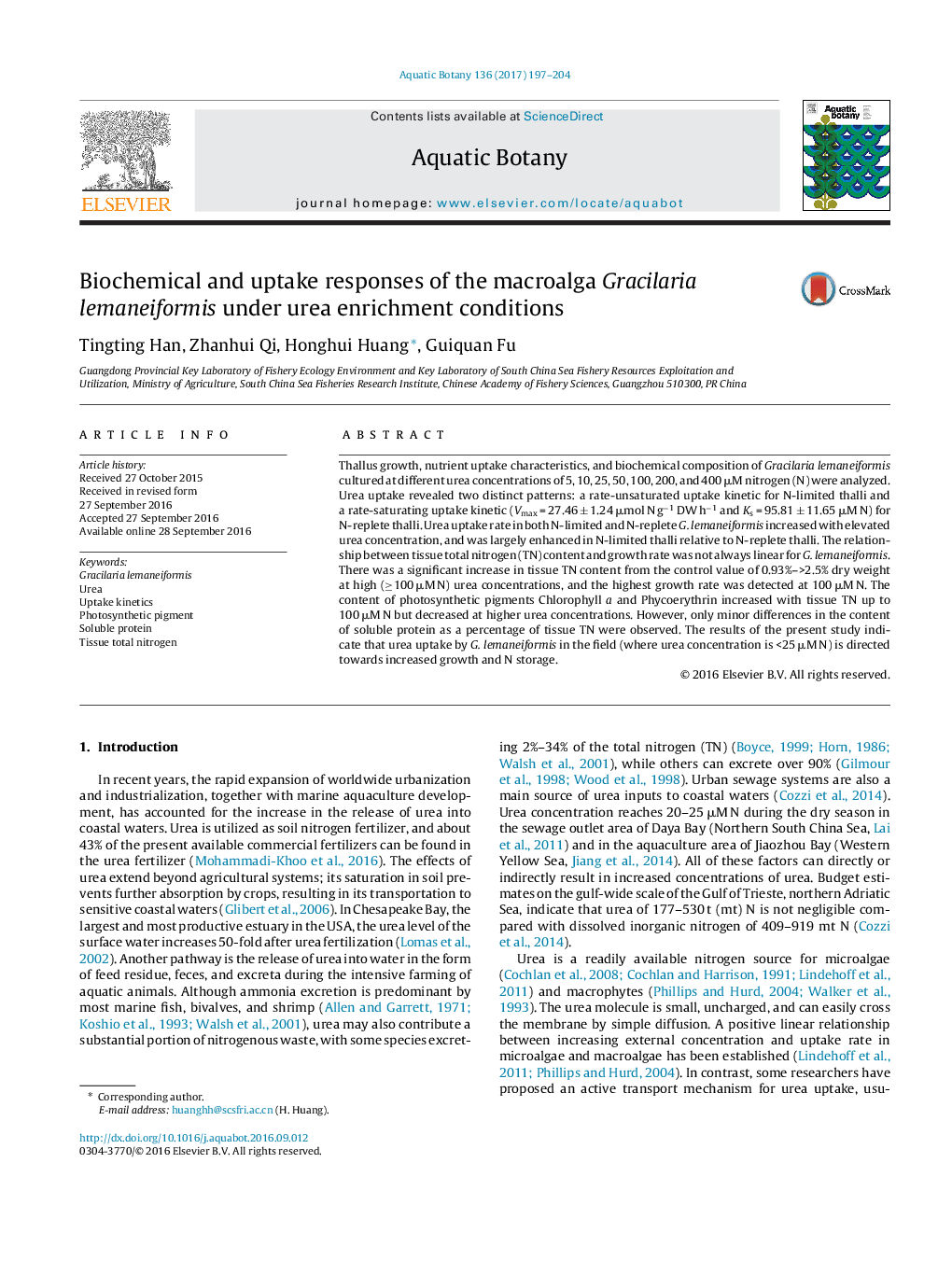| Article ID | Journal | Published Year | Pages | File Type |
|---|---|---|---|---|
| 4527534 | Aquatic Botany | 2017 | 8 Pages |
•Gracilaria lemaneiformis urea uptake kinetics showed two distinct patterns.•Urea uptake and nitrogen (N) storage were not always coupled with growth processes.•Urea uptake rate was enhanced for N-limited thalli relative to N-replete thalli.•G. lemaneiformis has potential to be utilized as biofilter to alleviate urea enrichment in the field.
Thallus growth, nutrient uptake characteristics, and biochemical composition of Gracilaria lemaneiformis cultured at different urea concentrations of 5, 10, 25, 50, 100, 200, and 400 μM nitrogen (N) were analyzed. Urea uptake revealed two distinct patterns: a rate-unsaturated uptake kinetic for N-limited thalli and a rate-saturating uptake kinetic (Vmax = 27.46 ± 1.24 μmol N g−1 DW h−1 and Ks = 95.81 ± 11.65 μM N) for N-replete thalli. Urea uptake rate in both N-limited and N-replete G. lemaneiformis increased with elevated urea concentration, and was largely enhanced in N-limited thalli relative to N-replete thalli. The relationship between tissue total nitrogen (TN) content and growth rate was not always linear for G. lemaneiformis. There was a significant increase in tissue TN content from the control value of 0.93%–>2.5% dry weight at high (≥100 μM N) urea concentrations, and the highest growth rate was detected at 100 μM N. The content of photosynthetic pigments Chlorophyll a and Phycoerythrin increased with tissue TN up to 100 μM N but decreased at higher urea concentrations. However, only minor differences in the content of soluble protein as a percentage of tissue TN were observed. The results of the present study indicate that urea uptake by G. lemaneiformis in the field (where urea concentration is <25 μM N) is directed towards increased growth and N storage.
